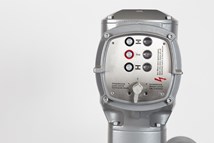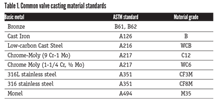Blockchain Won’t Save the World, But What It Does, It Does Very Well
What is blockchain, anyway?
The governance rules also enforce the fact that once written, the original data cannot be modified. This is one of the unique strengths of blockchain. Yes, changes can be recorded, but the records are immutable, so the origin information is still accessible.
Is blockchain for you?
To consider whether blockchain might improve tracking and tracking, ask these questions:
- Do you need to trace various components within your supply chain across multiple parties?
- Would you benefit from reduced processing for invoice reconciliation?
- Could you save valuable time, resources and money by increasing supply chain visibility?
If you answered “yes” to any of the above, then blockchain is for you.
One great example of how invoice reconciliation can be optimized is the case of Walmart Canada’s groundbreaking freight payment solution. By integrating their 60 or so ground freight carriers into a blockchain-based platform created by DLT Labs of Toronto, Canada, they were able to reduce transportation disputes from 70% to below 3% in only a few months.
The mechanism is simple. Both Walmart Canada and the carrier have access to the same information at the same time. The invoice is not the result of a one-way transaction from the carrier to the client but rather it is co-created in real time between the two parties. This eliminates the he-said, she-said factors that are prevalent in so many freight-pay disputes. By using automated Internet of Things (IoT) data such as time and location, and by using a trusted blockchain ledger as the backbone of the process, all parties have seen improvements in their cash flow.
But you may be thinking, “I don’t have Walmart’s scale and I don't have a ready-made network of partners to rely on. Can I still benefit from blockchain technology?” The answer is that you certainly can.
Another great use-case is that of warranties. By scanning a QR code on a pump, valve or other piece of industrial equipment, the user can have access to the history, warranty information, repair instructions or may even trigger a service call to the manufacturer.
Some insurance companies are relying on a blockchain ledger and IoT data as a trusted source of information against claims, which eliminates the need for an in-person inspection. This, in turn, cuts down processing costs and increases customer satisfaction.
What about my existing system?
By now, you may be thinking, “I’m sold, but what about my legacy systems? They are entrenched into our day-to-day. I can’t just drop everything for the sake of Blockchain.”
That’s the beauty of this technology. You don’t have to drop everything. Many options now enable organizations to stack distributed ledger technology on top of existing applications, such as enterprise resource planning (ERP), transportation management systems (TMS) or warehouse management systems (WMS).
Using middleware, or direct integration, you can bring important information into the ledger in order to share it with your network partners. This allows firms to write once and use many times. Going back to the Walmart Canada case, some carriers are sending their information to the distributed ledger with electronic data interchange (EDI) and some are through a web portal.
As companies continue to slowly transition their internal processes to more modern standards, their businesses keep moving forward with the added benefit of increased visibility, increased trust and happier clients and customers.
What is coming in the near future?
As with every technology, blockchain is also evolving. More robust tools are seeing the light. Open-source solutions are available, as well as low-cost supply-chain modelling tools. Competing blockchains are even working together to ensure interoperability among their different platforms.
Blockchain will continue to evolve for years to come. One thing is for certain. Enterprise blockchains are here now and will only improve with time. So now may be a good time to incorporate blockchain technologies into your supply chain planning or other processes. If the COVID-19 pandemic has taught us anything, it’s how important a robust and visible supply chain is. And that is something blockchain does very well.
Stephen Cherlet is owner/founder of FarStar S.A.C. Consulting (www.farstarconsulting.com) and chair of the national board of directors at Supply Chain Canada (www.supplychaincanada.com). He can be contacted at stephen@farstarconsulting.com.
Erik Valiquette is co-founder and president of the Canadian Blockchain Supply Chain Association. He can be reached at erik@cbsca.ca.








 Unloading large gate valve.jpg;maxWidth=214)

